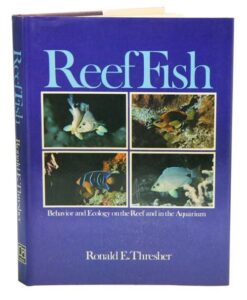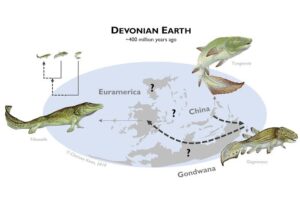Back to: ZOOLOGY 300 Level
WELCOME TO CLASS!
It’s always great to see your commitment. You’ve been doing excellently, and today’s topic is another fascinating step in understanding how animals—including humans—evolved. We’re going to learn how vertebrates made one of the biggest transitions in evolutionary history: moving from water to land. This topic is about the origin of tetrapods and the incredible story of the water-land transition.
Origin Of Tetrapods, Water-Land Transition
You’ve probably seen frogs leaping in the rainy season or lizards basking in the sun on a fence in Lagos or Kaduna. These animals belong to a group known as tetrapods—vertebrates with four limbs. But did you know their ancestors once lived only in water like fish? Let’s trace how they came to live on land.

What Are Tetrapods?
The word tetrapod means “four feet.” Tetrapods include amphibians (like frogs), reptiles, birds, and mammals—including us. Their common feature is having four limbs or evolved structures derived from limbs (like bird wings or human arms and legs).
Tetrapods evolved from a group of lobe-finned fish around 360–390 million years ago during the Devonian Period.
The Ancestral Fish: Lobe-Finned Fish
These were not your average bony fish. Lobe-finned fish like Tiktaalik, a famous fossil discovered in 2004, had:
- Fins with bones inside, similar to the structure of arms and legs
- Lungs as well as gills
- A flat head and eyes on top, perfect for looking above the water surface
- A neck—something most fish don’t have!
These features made Tiktaalik a perfect “bridge” between water-dwelling fish and land-living tetrapods.

Why Move to Land?
Several environmental pressures may have pushed fish ancestors to explore land:
- Drying water bodies: Seasonal drying of ponds and swamps (just like we see in parts of Nigeria) may have forced animals to seek new habitats.
- Predator avoidance: Escaping large aquatic predators by crawling to shallow waters or damp land.
- New food sources: Insects and other invertebrates already lived on land, providing a fresh source of food.
- Oxygen access: Air breathing was useful in oxygen-poor water, which is common in stagnant swamps.
Adaptations for Land Life
To survive and function outside water, ancestral tetrapods developed important changes:
- Limbs with digits (fingers and toes) instead of fins, to support walking
- Stronger vertebral column and limb girdles to hold body weight against gravity
- Lungs for breathing air, as gills would collapse outside water
- Skin that could resist drying, although early tetrapods like amphibians still needed moist environments
- Sensory changes, like improved hearing for air-based sounds
In essence, these changes prepared them to walk, breathe, and feed on land.
Modern Evidence in Amphibians
Amphibians like frogs are living examples of this transition:

- Their tadpoles begin life in water with gills, like fish.
- As they mature, they develop lungs and limbs, allowing them to live on land.
This mirrors the ancient evolutionary journey.
Importance of the Transition
The water-land transition was one of the most critical events in vertebrate evolution. It allowed animals to colonise land, leading to the rise of reptiles, birds, and mammals. Without this move, life as we know it today wouldn’t exist.
Summary
- Tetrapods evolved from lobe-finned fish with limb-like fins and lungs.
- Tiktaalik is a key transitional fossil showing features of both fish and tetrapods.
- Adaptations like limbs, lungs, and stronger skeletons helped vertebrates move onto land.
- Environmental pressures like drying habitats and new food sources played major roles.
Evaluation
- What does the term “tetrapod” mean, and which animals are tetrapods?
- Name two features of Tiktaalik that show it’s a link between fish and tetrapods.
- List three environmental reasons why aquatic animals may have moved to land.
- What adaptations helped tetrapods survive on land?
- How do modern amphibians reflect the water-land transition?
You’ve just uncovered one of nature’s most extraordinary shifts. The ability to walk on land didn’t happen overnight—it was built slowly, fin by fin, step by step. Stay curious and keep asking questions. That’s how science comes alive in you. See you in the next class!
